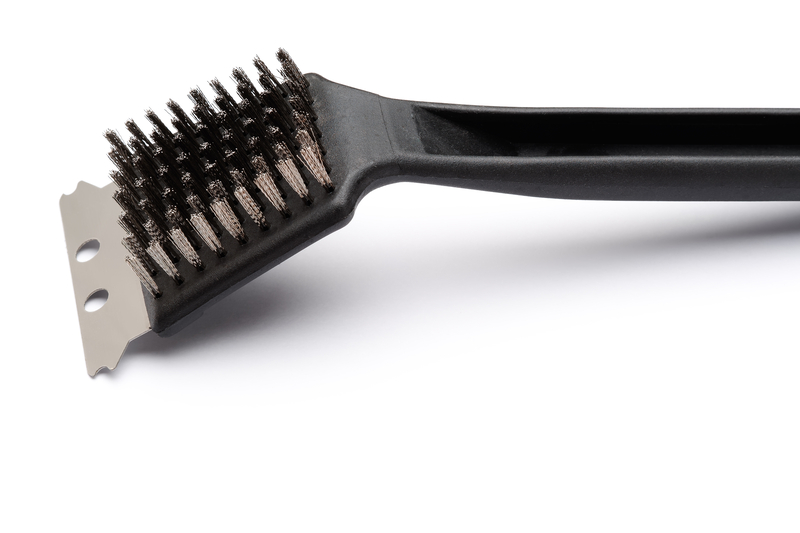Proven Techniques for Cleaning Burnt-On Mess From Your Stovetop
Posted on 22/08/2025
Proven Techniques for Cleaning Burnt-On Mess From Your Stovetop
Does your stovetop look less like a kitchen appliance and more like the aftermath of a cooking experiment gone wrong? Burnt-on messes are a common kitchen headache, but with the right approach, you can restore your stovetop's shine. In this comprehensive guide, we'll walk you through proven stovetop cleaning methods--from natural remedies to specialized products--to help you get rid of stubborn grime and burnt-on food residues efficiently and safely.
Understanding Why Burnt-On Stovetop Messes Happen
Before we dive into removing burnt spots, it's important to know why they occur. Splattering sauces, boil-overs, and greasy spills that aren't wiped up immediately can quickly bake onto your cooktop surface when exposed to high heat. The longer these residues remain, the tougher they bond.
- High heat carbonizes food particles, creating tough, black patches.
- Neglected spills dry out and harden, becoming more resistant to casual wiping.
- Repeated cooking layers grime, making stains harder to remove over time.
Understanding these causes can help you not only clean up more effectively but also take proactive steps to prevent future build-ups.

The Essentials: What You Need To Clean a Burnt-On Stovetop
Success with stovetop mess removal begins with the right supplies. Here's a quick checklist:
- Baking soda - an effective, non-abrasive cleaner
- Vinegar - a natural degreaser and deodorizer
- Dish soap - helps break down grease
- Razor blade scraper - for glass or ceramic cooktops
- Microfiber cloths or soft sponges
- Non-scratch scouring pads
- Rubber gloves
- Commercial stovetop cleaner (optional)
*Pro tip: Always consult your stovetop's manual for recommended cleaning methods--some surfaces are more delicate than others!
Step-by-Step: How to Clean Burnt-On Stains from Your Stovetop
Safety Advice: Cool Down and Unplug
Always allow your stovetop to cool down completely before beginning any cleaning process. If you have an electric cooktop, unplugging it adds an extra layer of safety.
Easy First Step: Gentle Wipe-Down
- Mix a few drops of dish soap with warm water.
- Use a microfiber cloth to wipe the surface, picking up loose debris and grease.
- This prevents scratching later.
Homemade Cleaning Pastes for Tough Stains
Baking soda and vinegar are natural heroes in the fight against stubborn stove stains:
- Baking Soda Paste: Combine baking soda with enough water to create a thick paste. Spread this over burnt areas. Let it sit for at least 15 minutes (longer for severe stains), allowing the baking soda to penetrate and loosen debris.
- Add Vinegar for Extra Power: Spray or drizzle white vinegar over the paste. You'll notice fizzing--that's the reaction breaking down carbonized food. Wipe clean with a damp cloth after 10 more minutes.
Variation: For greasy messes, add a drop of dish soap to your paste for better oil-dissolving performance.
Deep Cleaning Glass and Ceramic Cooktops
Glass and ceramic surfaces require a more delicate touch, but the right approach can leave them gleaming.
- Apply a specialized cooktop cleaner: These are formulated to soften and lift burnt-on residue without scratching. Brands like Bar Keepers Friend or Weiman are user favorites.
- Use a non-scratch pad: Lightly scrub in a circular motion. Avoid steel wool, which can scratch.
- Razor blade scraper technique: For extremely stubborn spots, hold a razor blade at a 45-degree angle and carefully scrape under the debris. Keep the blade flat to avoid gouging the glass! Always check your stovetop manual before using this method.
- Finish with microfiber polishing: Buff the area with a clean, dry cloth for a streak-free shine.
Handy Solutions for Gas Burner Grates and Drip Pans
Gas stoves with removable grates or drip pans need a different approach:
- Remove grates and pans and soak them in hot water and a few teaspoons of dish soap for 30-60 minutes.
- For stubborn carbon, create a paste of baking soda and water; scrub using an old toothbrush or non-scratch pad.
- For metal grates, you can use a bit of vinegar or even ammonia (in a ventilated space and with gloves) to break down burnt-on residues.
- Rinse thoroughly and dry before replacing.
Electric Coil Burners: Methods for Safe Cleaning
- Make sure the coil is completely cool and disconnected.
- Wipe down with a damp cloth; for sticky spots, use a little dish soap or white vinegar on a cloth.
- Never immerse coils in water!
- For built-up debris, gently scrub with a baking soda paste, then wipe clean with a damp, non-abrasive cloth.
Alternative Burnt Stovetop Cleaning Techniques
Steam Cleaning for Hard-to-Remove Messes
A handheld steam cleaner can be a game-changer for deep, chemical-free cleaning. Follow these simple steps:
- Fill with water, plug in, and let heat up according to manufacturer instructions.
- Direct the steam flow onto stubborn stains; the heat and moisture will loosen food residue.
- Quickly wipe away with a microfiber cloth.
Lemon Juice: A Fresh, Natural Alternative
Lemon juice is a natural degreaser and deodorizer:
- Cut a lemon in half and rub over stains.
- Let sit for 10-15 minutes.
- Wipe with a clean, damp cloth.
- This method works best for light burnt stains and leaves a fresh scent.
Commercial Burnt-On Cleaner Options
If home remedies aren't cutting it, several specialized stovetop cleaners are designed to tackle burnt-on messes. Look for products labeled safe for your stove type, and always follow package instructions.
- Bar Keepers Friend: Great for heavy-duty stains on glass and stainless steel.
- Cerama Bryte: Formulated specifically for ceramic and glass cooktops.
- Weiman Cooktop Cleaner: Safe for daily use, with a mild but effective formula.
Expert Tips for Preventing Burnt-On Stovetop Messes
- Wipe spills immediately: Quick action is the best way to avoid long-term build-up.
- Cook on medium heat: High heat increases the chances of burnt-on food particles.
- Use pan lids: This prevents boil-overs and splatter, keeping your stovetop cleaner.
- Routinely deep clean: Even when it looks clean, a weekly wipe-down with a mild cleaner prevents stains from bonding to the surface.
- Invest in stovetop protectors: Silicone mats or liners save time and effort.
Stovetop Cleaning for Different Surface Types
Glass and Ceramic Cooktops
- Use only non-abrasive cleaners and pads.
- Avoid heavy scrubbing tools that may scratch the surface.
- Stagger cleaning time--let products sit so they do the work for you.
Stainless Steel Cooktops
- Use mild dish soap, baking soda, or stainless steel cleaner.
- Always scrub in the direction of the grain to prevent streaks and scratches.
- Dry promptly to avoid water spots.
Electric Coil & Gas Burner Stoves
- Remove parts when possible and soak/clean separately.
- Be careful not to get water into gas or electrical components.
Frequently Asked Questions (FAQ)
Is it safe to use a razor blade on glass stovetops?
Yes, but always hold the blade at a shallow 45-degree angle and use gentle pressure. Check your manufacturer's guidelines to ensure this method is recommended for your model.
Can I use bleach to clean burnt-on stove messes?
Bleach is generally not recommended, as it can damage delicate surfaces and is not effective at breaking down carbonized food. Stick to baking soda, vinegar, and specialized products instead.
How often should I deep clean my stove?
Aim for a light clean after each use and a deep clean every 1-2 weeks, depending on usage.

Conclusion: Restore Your Stovetop With These Proven Cleaning Techniques
A burnt-on mess doesn't have to be a permanent part of your kitchen decor. With these proven stovetop cleaning techniques--including natural remedies and commercial solutions--you can confidently tackle even the toughest stains. Make a habit of quick clean-ups and periodic deep cleans to keep your cooktop sparkling and prolong its lifespan.
Ready to win the battle against burnt-on stovetop mess? Bookmark this guide and enjoy a cleaner, more inviting kitchen every day!



